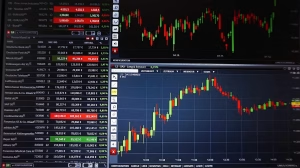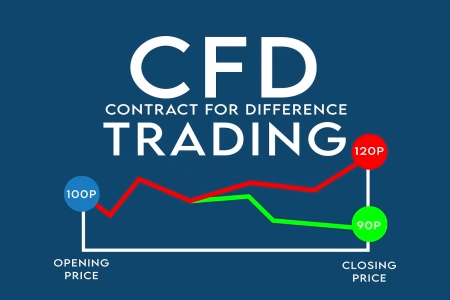In the fast-paced world of global finance, staying ahead of market movements requires more than just intuition—it demands timely data and strategic foresight. That’s where economic calendar updates come in. Whether you’re a seasoned investor, a forex trader, or a beginner exploring financial markets, keeping an eye on economic events is crucial for informed decision-making.
Economic Calendar Updates
What Is an Economic Calendar?
An economic calendar is a real-time schedule of important economic events, reports, and data releases that impact financial markets. These updates include:
- Government-issued economic indicators
- Central bank meetings and interest rate decisions
- Inflation and employment data
- GDP figures
- Manufacturing and services indexes
- Trade balance reports
Traders and investors monitor these events closely because they influence market volatility, investor sentiment, and asset prices across sectors such as forex, stocks, commodities, and bonds.
Why Economic Calendar Updates Matter
1. Market Volatility
Some economic events—like U.S. Non-Farm Payrolls (NFP), Federal Reserve interest rate decisions, or inflation reports (CPI)—can cause sharp price swings in currency pairs, indices, and commodities. Timely updates let you prepare for these moves.
2. Strategic Planning
Knowing what data is coming allows traders to adjust positions, set stop-loss or take-profit levels, or avoid entering trades during high-risk times.
3. Understanding Market Sentiment
Each release provides insight into the health of a country’s economy. Strong job data may boost a currency, while rising inflation may trigger central banks to raise rates—affecting bond yields and equity markets.
4. Global Relevance
In a connected world, economic updates from one country—especially major economies like the U.S., China, or the Eurozone—can have ripple effects globally.
Key Economic Indicators to Watch
Here are some of the most closely followed events featured in economic calendar updates:
1. Non-Farm Payrolls (NFP) – U.S.
Released monthly by the U.S. Bureau of Labor Statistics, NFP measures the number of jobs added or lost, excluding farm and government workers. A major driver for the U.S. dollar and equity markets.
2. Consumer Price Index (CPI)
Tracks inflation by measuring the average change in prices paid by consumers. A rising CPI often signals inflationary pressure, prompting interest rate hikes.
3. Federal Reserve Meetings (FOMC)
These meetings determine U.S. monetary policy. Changes to the federal funds rate or forward guidance can dramatically move forex and bond markets.
4. Gross Domestic Product (GDP)
Measures the economic output of a country. Strong GDP growth is typically bullish for a country’s currency and stock market.
5. Unemployment Rate
High unemployment can signal economic weakness, potentially leading to monetary easing. Lower unemployment often boosts market confidence.
6. PMI (Purchasing Managers’ Index)
Released by institutions like ISM (U.S.) and Markit (Global), the PMI reflects the health of the manufacturing and service sectors.
7. Central Bank Decisions (ECB, BOE, BOJ, RBA, etc.)
Interest rate decisions and monetary policy statements from central banks globally can influence everything from currency values to stock indices.
How to Read an Economic Calendar
Each item on an economic calendar typically includes:
- Date and time of release
- Country or region (e.g., U.S., Eurozone, Japan)
- Economic indicator name
- Previous value
- Forecast or consensus estimate
- Actual result (once released)
- Impact rating (Low, Medium, High)
High-impact events are marked with bold colors or symbols to signal that they may create significant market volatility.
Where to Find Real-Time Economic Calendar Updates
Reliable platforms offering live economic calendars include:
- Investing.com
- Trading Economics
- Forex Factory
- DailyFX
- Bloomberg and Reuters
- MetaTrader 4/5 (via calendar plugins)
These platforms update economic data in real-time and often include analysis, historical charts, and market commentary to aid interpretation.
How Traders Use Economic Calendar Updates
1. Pre-News Trading Strategy
Traders use the forecast vs. previous data to anticipate market moves. If a positive result is expected, they may position accordingly before the release—but this carries risk if the actual number deviates significantly.
2. Post-News Trading Strategy
Some traders wait for the data to be released, then trade based on the reaction. This can help avoid whipsaws and false moves.
3. Avoiding Trades During Volatility
High-impact events can cause price spikes and slippage. Many traders choose to avoid trading during major releases unless they specialize in news trading.
4. Swing Trading and Long-Term Investing
Investors use calendar updates to adjust their macroeconomic view. For example, if inflation is accelerating and central banks are tightening policy, they may rotate into value stocks or inflation-protected bonds.
Common Mistakes to Avoid
❌ Trading Without Context
Economic numbers must be viewed in context. A positive CPI report may not matter if central banks dismiss inflation as temporary.
❌ Ignoring Forecasts
Always compare the actual result to the forecast, not just the previous data. Markets often price in expectations before the release.
❌ Overreacting to One Report
No single report tells the full story. Use a series of economic updates to gauge trends.
❌ Failing to Manage Risk
Even with the right analysis, markets can behave unpredictably. Use stop-loss orders and position sizing to control risk.
Example: Economic Calendar in Action
Scenario: On the first Friday of the month, the U.S. NFP report is scheduled for release at 8:30 AM EST. The forecast is +250,000 jobs added. The previous month was +180,000.
Market Expectations: Strong job growth = bullish USD.
Actual Release: +100,000 (below expectations)
Immediate Reaction:
- USD falls sharply
- Gold rises
- U.S. stock futures decline on recession fears
This example illustrates how actual data diverging from forecasts can dramatically move markets—highlighting the importance of real-time economic calendar updates.
Tips to Maximize the Value of Economic Calendar Updates
- Set Alerts:
Use calendar platforms to set reminders for high-impact events.
- Use Time Zones:
Adjust calendar settings to your local time to avoid missing key updates.
- Pair With Technical Analysis:
Combine economic data with chart patterns to time entries and exits.
- Focus on Relevant Data:
Depending on your trading asset (e.g., USD/JPY vs. Gold), focus on updates that influence your market most.
- Keep a Trading Journal:
Log how markets respond to different data to build experience and improve future decisions.
Final Thoughts on Economic Calendar Updates
Whether you’re trading currencies, commodities, stocks, or indices, staying in sync with economic calendar updates is essential for success. These updates provide actionable insight into global economic health, central bank intentions, and potential market volatility.
Used wisely, an economic calendar becomes more than just a schedule—it’s a strategic tool for anticipating trends, managing risk, and capitalizing on opportunities in real time.
Remember:
Markets move not just on data, but on the difference between expectations and reality. Staying informed and prepared can give you a powerful edge in the markets.
For more updates, visit https://tradingmarketsignals.com/








